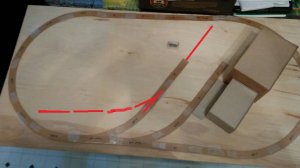ACL-CSX
Founder, NHRR; Founder, Nathan's Crossroads
It's all good. It's kind of hard to tell in that shot anyway. N scale vehicles are so tiny.My eyes did not see that at all when I first looked at it. I guess I should have looked closer before I guessed.
Are you wanting both tracks to server the same industry or are they meant to serve separate industries? A switchback on the one to the left might add a little interest.
I was thinking about using both for the same building. I'd like to have a second industry and a town, but I don't know if they will both fit and not look cluttered.
Since I am still new at this I'm not 100% certain what you mean by a switchback.
Jesse


